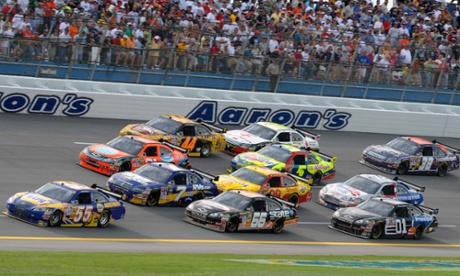
You know analytics is serious in sport when the Massachusetts Institute of Technology shows an interest. Not only does it run a yearly conference on the topic, its boffins are busy figuring out fresh ways to revolutionise sport using Big Data.
“Sports are watched by millions and millions of people - yet, pretty much all of the strategic decisions are made by humans in a split second. These decisions could definitely be enhanced by learning from past data, but humans can’t keep large databases in their heads. I wanted to build predictive analytics tools to help teams make these decisions,” Cynthia Rudin, associate professor of statistics at MIT, tells the Guardian.
Rudin believes Big Data analytics can help in various ways, from tweaking training plans to determining patterns about competitors. “If we know, for instance, that in certain circumstances, a particular coach on the opposition team tends to make a particular decision, then we can be ready for it,” she adds. “Another example - we can place sensors all over a car while it is in training for a race, and use the sensor data to help a driver learn how to race better.”
The ever-growing world of Big Data has already permeated the sporting arena in surprising ways. Player health and safety, for instance, is one increasingly attractive use case. “Particularly in high injury sports, you think about the health of player, how we can use data and analytics to look after their bodies,” Martin Houghton, managing partner from HP’s analytics and data management division in EMEA.
Just look to the high impact, rough game of rugby, where players are being saved from long-lasting physical damage thanks to predictive analytics technology. Pro players across the globe have been fitted with sensors to measure and monitor intensity levels, collisions and fatigue to help predict their limit and injury risk. From all this information, coaches can determine how to alter players’ training schedules. Psychological data can also be collected to explore how psyches can affect performance.
American sports continue to benefit from Big Data in myriad ways. The Oakland A’s baseball team famously used analytics to make strides in Major League Baseball, as captured in the 2011 film Moneyball, whilst NBA basketball teams are now investing heavily in the necessary technologies and expertise to gain an advantage over others.
Organisations such as STATS use cameras to measure players and the ball in x and y coordinates. This brings in speed, distance, player separation and ball possession statistics, which can be filtered into user-friendly interfaces so coaches can make better decisions.
And data analysts are being employed en masse by some of the NBA’s best-known teams. The Dallas Mavericks have been investing heavily of late. Coach Rick Carlisle recently revealed a raft of new personnel has been brought into the analytics division of the team. It’s expecting to see manifold benefits heading into the new season. “We’re going to be a better team this year,” Carlisle said this month. “We know that by the analytics.”
The ultimate aim for all these sports teams is to improve performance in the same way modern businesses in almost all industries seek to exploit data to tweak their operations for the good of the company as a whole and their customers. Just looking at the business side of sport, it’s easy to see the crossover between the two ostensibly separate worlds.
HP has been working with NASCAR to boost the motor sport’s brand. Together they built the Fan and Media Engagement Center (FMEC), which collects up all the information fans post publicly online. All this data can be captured, analysed and passed on to al the relevant people, whether the drivers or their PR reps. Now they all know what the fans are thinking, they know just how to get them revved up.
And this is what Big Data should be about for any business - it’s the customers who make or break the company. They need to be impressed via information before anyone else.
The Driving innovation hub is funded by HP. All content is editorially independent except for pieces labelled advertisement feature. Find out more here.

